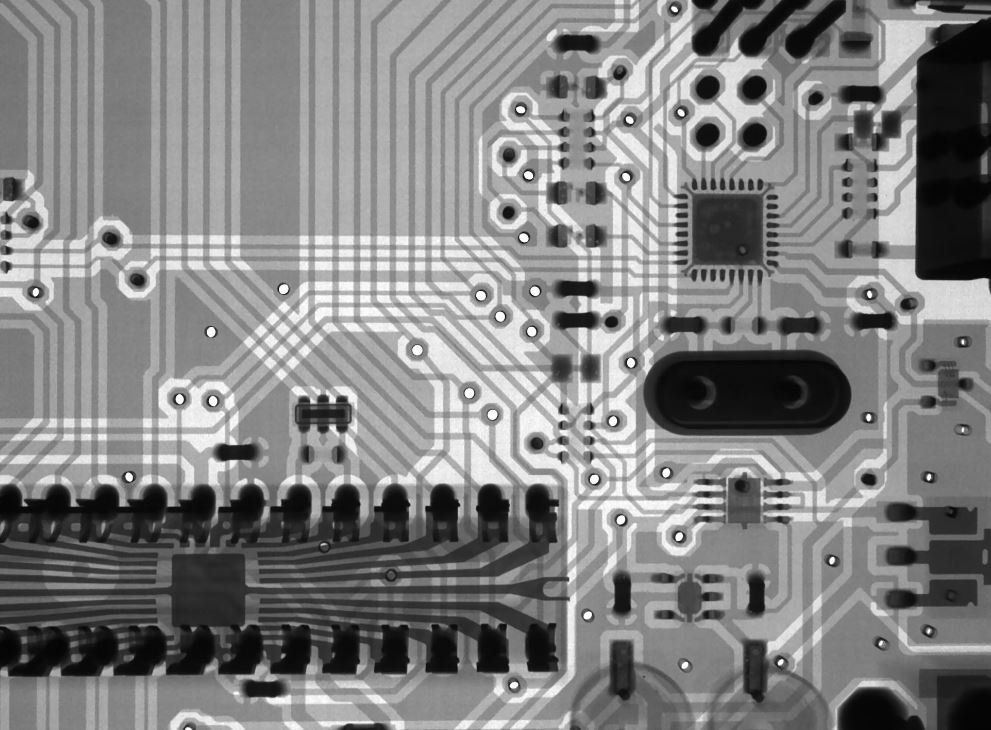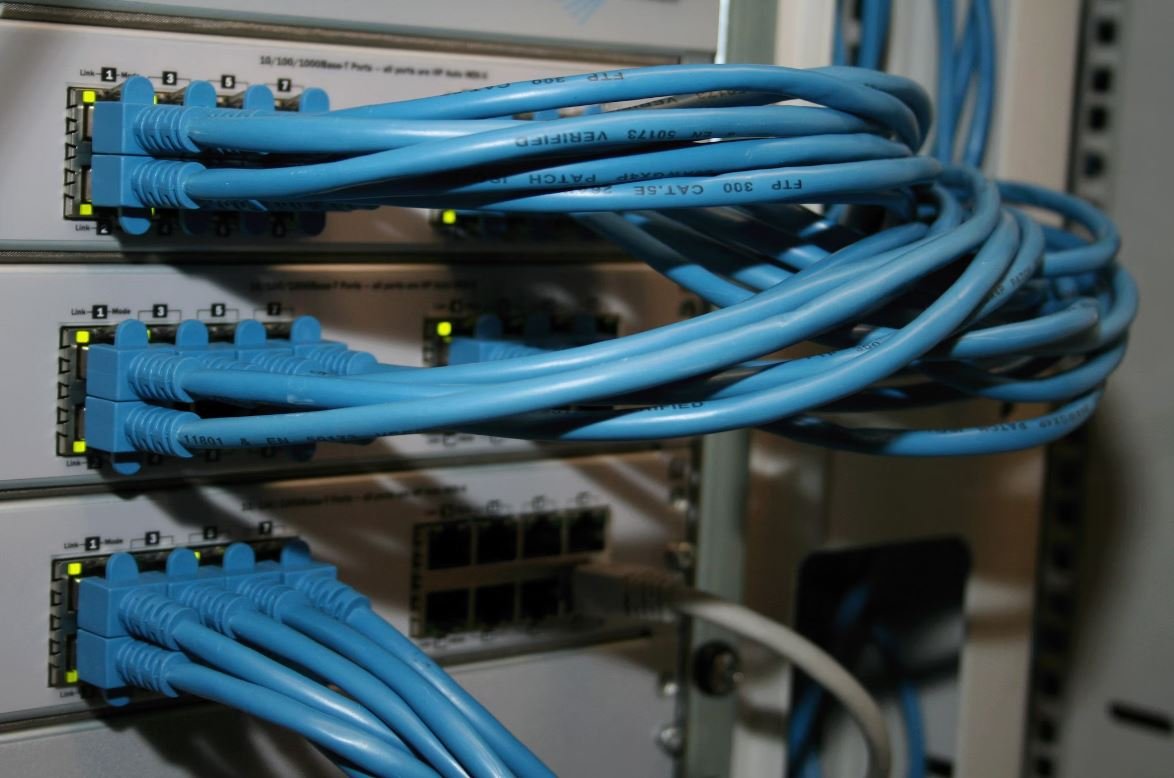AI vs. Cybersecurity
Artificial Intelligence (AI) has revolutionized various industries, but its impact on cybersecurity is particularly notable. With cyberattacks becoming more sophisticated and prevalent, the need for advanced tools and techniques to combat them has become crucial. AI is now being increasingly employed in cybersecurity to enhance threat detection, improve incident response, and strengthen overall defense mechanisms.
Key Takeaways
- AI is transforming the field of cybersecurity and helping combat advanced cyber threats.
- AI-powered tools can detect patterns and anomalies in large datasets, improving threat detection capabilities.
- Machine learning algorithms enable quick analysis of vast amounts of cybersecurity data.
- AI can automate threat response and assist cybersecurity professionals in making faster decisions.
One interesting aspect of AI in cybersecurity is its ability to detect patterns and anomalies in large datasets that may go unnoticed by human analysts. By analyzing massive amounts of data rapidly, AI algorithms can identify potentially malicious activities or behaviors that might be indicative of a cyber attack, enabling organizations to detect and respond to threats more effectively.
AI’s machine learning capabilities are also invaluable in cybersecurity. By training on historical attack data, machine learning algorithms can automatically learn and adapt to the ever-evolving tactics deployed by cybercriminals. This allows for quicker analysis of vast amounts of cybersecurity data, enabling faster threat detection and response times.
AI not only assists in threat detection but can also automate response mechanisms. By using AI-powered tools, organizations can automatically respond to detected threats, mitigating potential damage and reducing incident response time. This automation can be highly efficient, especially when it comes to rapidly spreading threats like malware or ransomware.
Another noteworthy aspect of AI in cybersecurity is its ability to assist human cybersecurity professionals. AI tools can provide analysts with real-time insights, alerting them to potential threats and helping in the decision-making process of whether an action is warranted. This collaboration between AI and humans can greatly enhance cybersecurity teams’ capabilities and improve overall defense mechanisms.
Table 1: Cybersecurity Challenges
| Challenge | Solution |
|---|---|
| Increasingly sophisticated cyberattacks | AI-powered threat detection |
| Need for rapid analysis of large datasets | Machine learning algorithms |
| Automating threat response mechanisms | AI-powered incident response |
| Augmenting human cybersecurity teams | AI-assisted decision-making |
Table 1 illustrates some common cybersecurity challenges and the corresponding AI solutions that can address them effectively. By utilizing AI-powered tools and techniques, organizations can strengthen their defense strategies against cyber threats, ultimately safeguarding sensitive information and preserving business continuity.
Data Points and Statistics
- AI-powered threat detection systems can accurately detect up to 99% of cyber threats, compared to 70% by traditional methods.
- In 2020 alone, the global cost of cybercrime exceeded $1 trillion.
- Machine learning algorithms can analyze millions of cybersecurity events in seconds, greatly improving response times.
Table 2: AI in Cybersecurity Adoption Rates
| Year | Adoption Rate |
|---|---|
| 2018 | 23% |
| 2019 | 36% |
| 2020 | 51% |
Table 2 showcases the increasing adoption rates of AI in cybersecurity over the years. As organizations recognize the benefits and capabilities of AI, they are increasingly implementing it in their cybersecurity strategies to combat the growing threats in the digital landscape.
In conclusion, AI has become an indispensable tool in the fight against cyber threats. Its ability to detect patterns, analyze large datasets, automate response mechanisms, and augment human cybersecurity teams make it an invaluable asset. As cybercriminals continue to evolve their tactics, AI will continue to evolve as well, ensuring organizations remain at the forefront of cybersecurity defense.

Common Misconceptions
Misconception 1: AI is a complete solution for cybersecurity
One common misconception is that AI alone can completely address all cybersecurity concerns. However, this is not the case as AI should be viewed as a tool rather than a standalone solution.
- AI cannot eliminate the need for human involvement in cybersecurity.
- AI should be combined with other security practices and technologies for maximum effectiveness.
- AI may also introduce new vulnerabilities that can be exploited by cybercriminals.
Misconception 2: AI can predict all cyber threats
Another misconception is that AI has the capability to predict all types of cyber threats in advance. While AI can indeed analyze patterns and historical data to identify potential threats, it cannot predict unknown threats or those that have never been encountered before.
- AI relies on data that it has been trained on and may struggle with detecting new or evolving threats.
- Human expertise is crucial in determining and responding to emerging cyber threats.
- Cyber attackers can also adapt their methods to bypass AI-based security systems.
Misconception 3: AI can replace human cybersecurity professionals
Some people mistakenly believe that AI can completely replace human cybersecurity professionals. While AI can automate certain tasks and enhance efficiency, it cannot replace the critical thinking, decision-making, and creativity that human experts bring to the field.
- Human cybersecurity professionals provide expertise and context that AI may lack.
- Cybersecurity is a complex and constantly evolving field that requires human intervention to adapt to new threats.
- AI should be seen as a tool to support and augment human cybersecurity professionals, not replace them.
Misconception 4: AI-based security systems are invulnerable
Another misconception is that AI-based security systems are infallible and invulnerable to attacks. While AI can bolster security measures, it is not immune to exploitation and manipulation by cybercriminals.
- AI can be tricked or manipulated by skilled attackers to evade detection or launch sophisticated attacks.
- Cybersecurity systems require constant updates and monitoring to address new vulnerabilities.
- Comprehensive security measures should combine AI with other defense strategies to enhance overall protection.
Misconception 5: AI will replace all forms of cybersecurity defense
Lastly, some people believe that AI will ultimately replace all other forms of cybersecurity defense methods. While AI can play a significant role in enhancing defense strategies, it should be seen as a complementary tool rather than a replacement for other established practices.
- AI is just one component of a multilayered defense system.
- Cybersecurity requires a holistic approach that includes human vigilance, risk assessment, and various technical controls.
- No single technology or tool can provide complete protection against all cyber threats.

Advantages of AI in Cybersecurity
The use of artificial intelligence (AI) in cybersecurity brings about numerous advantages. The following table highlights some of the key benefits:
| Advantages | Explanation |
|---|---|
| Improved threat detection | AI systems can analyze vast amounts of data to identify patterns indicative of cyber threats. |
| Rapid response | AI algorithms can swiftly respond to cyber attacks, reducing the time it takes to mitigate potential damage. |
| Behavioral analysis | AI can learn normal user behavior and identify anomalous actions that may indicate a security breach. |
| Automated threat hunting | AI can search for potential threats within a network, minimizing the need for manual intervention. |
| Adaptive defense | AI systems evolve and learn from new threats, adapting their defenses to counter emerging cyber risks. |
AI-Driven Cybersecurity Solutions
In the realm of cybersecurity, various AI-driven solutions have emerged, bolstering defense against cyber threats. The table below illustrates some of these cutting-edge technologies:
| Solution | Description |
|---|---|
| Machine learning algorithms | These algorithms enable AI systems to learn from data and make predictions, aiding in the identification of cyber threats. |
| Behavioral analytics | AI can analyze user behavior and network activity to detect anomalies and potential malicious actions. |
| Automated security incident response | AI-driven systems can automatically respond to security incidents, minimizing the impact on organizations. |
| Threat intelligence platforms | AI-powered platforms gather and analyze vast amounts of threat data, providing valuable insights for proactive defense. |
| Vulnerability management | AI can assess and prioritize vulnerabilities, facilitating efficient mitigation and reducing the risk of exploitation. |
Challenges in Implementing AI-Based Cybersecurity
While AI presents tremendous potential, there are certain challenges when it comes to implementing AI-based cybersecurity measures. The following table highlights some of these obstacles:
| Challenges | Description |
|---|---|
| Data privacy concerns | AI systems require access to vast amounts of sensitive data, raising concerns about privacy and data protection. |
| Adversarial attacks | Attackers may exploit vulnerabilities in AI systems, manipulating them to bypass security measures. |
| Lack of transparency | Sometimes, AI algorithms cannot provide clear explanations for their decisions, making trust in them challenging. |
| Cost and resource requirements | Implementing AI-based cybersecurity solutions can be expensive and resource-intensive for organizations. |
| Regulatory compliance | Data handling regulations and legal frameworks may pose challenges for organizations adopting AI in cybersecurity. |
AI vs. Human Analysts: A Comparison
Comparing the capabilities of AI and human analysts in the field of cybersecurity provides interesting insights. The table below presents a comparison of these two approaches:
| Aspects | AI | Human Analysts |
|---|---|---|
| Data processing | AI can process vast amounts of data at high speed, swiftly identifying potential threats. | Human analysts may struggle to process large datasets without experiencing fatigue or oversight. |
| Contextual understanding | AI lacks contextual understanding and may misinterpret certain situations, potentially leading to false positives or negatives. | Human analysts have contextual knowledge and can apply critical thinking to differentiate real threats from false alarms. |
| 24/7 monitoring | AI can operate continuously, providing round-the-clock monitoring and threat detection. | Human analysts require rest and cannot maintain constant vigilance, leaving potential gaps in monitoring. |
| Adaptability | AI systems can quickly adapt and learn from new threats, ensuring up-to-date defense mechanisms. | Human analysts may require training and skill development to keep up with rapidly evolving cyber threats. |
| Speed of response | AI algorithms can respond rapidly to attacks, reducing the time between detection and mitigation. | Human analysts may require more time to assess and respond to threats, potentially allowing longer exposure to vulnerabilities. |
Real-World Examples of AI in Cybersecurity
A number of real-world examples highlight the successful implementation of AI in cybersecurity. The following table showcases some notable instances:
| Examples | Description |
|---|---|
| IBM Watson for Cyber Security | IBM Watson utilizes AI to analyze and correlate vast amounts of security-related data, providing insights and assisting in threat detection. |
| CylancePROTECT | CylancePROTECT employs AI algorithms to identify and block malware and other cyber threats before they reach endpoints. |
| Darktrace | Darktrace utilizes AI and machine learning to identify abnormal behavior and potential threats within a network, enabling proactive defense measures. |
| FireEye Helix | FireEye Helix combines multiple AI-driven technologies to collect, analyze, and respond to security events in real-time. |
| Symantec Endpoint Protection | Symantec employs AI and machine learning to defend against advanced threats at the endpoint, providing enhanced security protection. |
The Future of AI and Cybersecurity
Looking ahead, the future of AI in cybersecurity holds immense potential. Society will witness even greater integration of AI technologies to combat the ever-evolving and sophisticated cyber threats. However, it remains imperative to address the challenges associated with AI implementation and ensure proper regulations to maintain a balance between innovation and security.
Frequently Asked Questions
What is the role of artificial intelligence (AI) in cybersecurity?
AI plays a crucial role in cybersecurity by enhancing threat detection, analyzing large volumes of data, and improving incident response capabilities. It can automate mundane tasks, identify patterns, and detect anomalies that may indicate a security breach.
How does AI contribute to threat detection and prevention?
AI can analyze network traffic, system logs, and user behavior to identify potential security threats. Machine learning algorithms can learn from past attack patterns and identify new, unknown threats in real-time. It assists in proactively blocking or alerting against malicious activities.
Can AI help in mitigating the impact of cyberattacks?
Yes, AI can help mitigate the impact of cyberattacks. It can provide rapid incident response, automating the process of identifying, containing, and eradicating threats. Additionally, AI-based systems can assist in recovering data and restoring compromised systems more efficiently.
Are there any limitations to relying solely on AI for cybersecurity?
While AI offers numerous benefits, it has some limitations. AI models may generate false positives or false negatives, meaning they may incorrectly flag legitimate activities as threats or fail to detect sophisticated attacks. Human expertise is still essential for interpreting, validating, and making critical decisions based on AI-generated insights.
How can AI be used to improve the effectiveness of security operations?
AI-enabled systems can automate routine security tasks, such as log analysis and vulnerability assessments. By reducing the burden of repetitive tasks, security professionals can focus on more complex issues and strategic decision-making. AI can assist in prioritizing alerts, enhancing incident response time, and improving overall security posture.
Are there any ethical concerns associated with AI in cybersecurity?
Yes, there are ethical concerns related to AI in cybersecurity. Issues like privacy infringement, algorithmic bias, and the potential misuse of AI-powered systems by threat actors can arise. Responsible implementation of AI along with compliance with ethical guidelines can help address these concerns.
Can AI technology be used maliciously to launch cyberattacks?
Yes, AI technology can be exploited by malicious actors to conduct cyberattacks. AI can be used for automated spear-phishing, creating highly realistic deepfake attacks, and evading traditional security measures. Consequently, it is crucial to develop advanced AI-based defense mechanisms to counter these emerging threats.
How does AI improve the detection of unknown and sophisticated threats?
AI systems utilize machine learning algorithms to identify patterns and anomalies in data. By analyzing vast amounts of information, including network traffic, system logs, and user behavior, AI can detect previously unknown and sophisticated threats. It can adapt and learn from new threats, continually improving its ability to recognize malicious activities.
Can AI algorithms replace human cybersecurity professionals?
No, AI algorithms cannot entirely replace human cybersecurity professionals. While AI can automate certain tasks and augment human capabilities, human expertise is critical for understanding context, making judgment calls, and developing effective strategic responses to complex threats. Human knowledge and reasoning are necessary for interpreting AI-generated insights accurately.
How is AI integrated into current cybersecurity practices?
AI is integrated into current cybersecurity practices through the deployment of AI-driven security solutions. These solutions, such as AI-based antivirus software, intrusion detection systems, and behavior analytics, leverage machine learning algorithms to enhance threat detection, automate incident response, and improve overall security operations.




